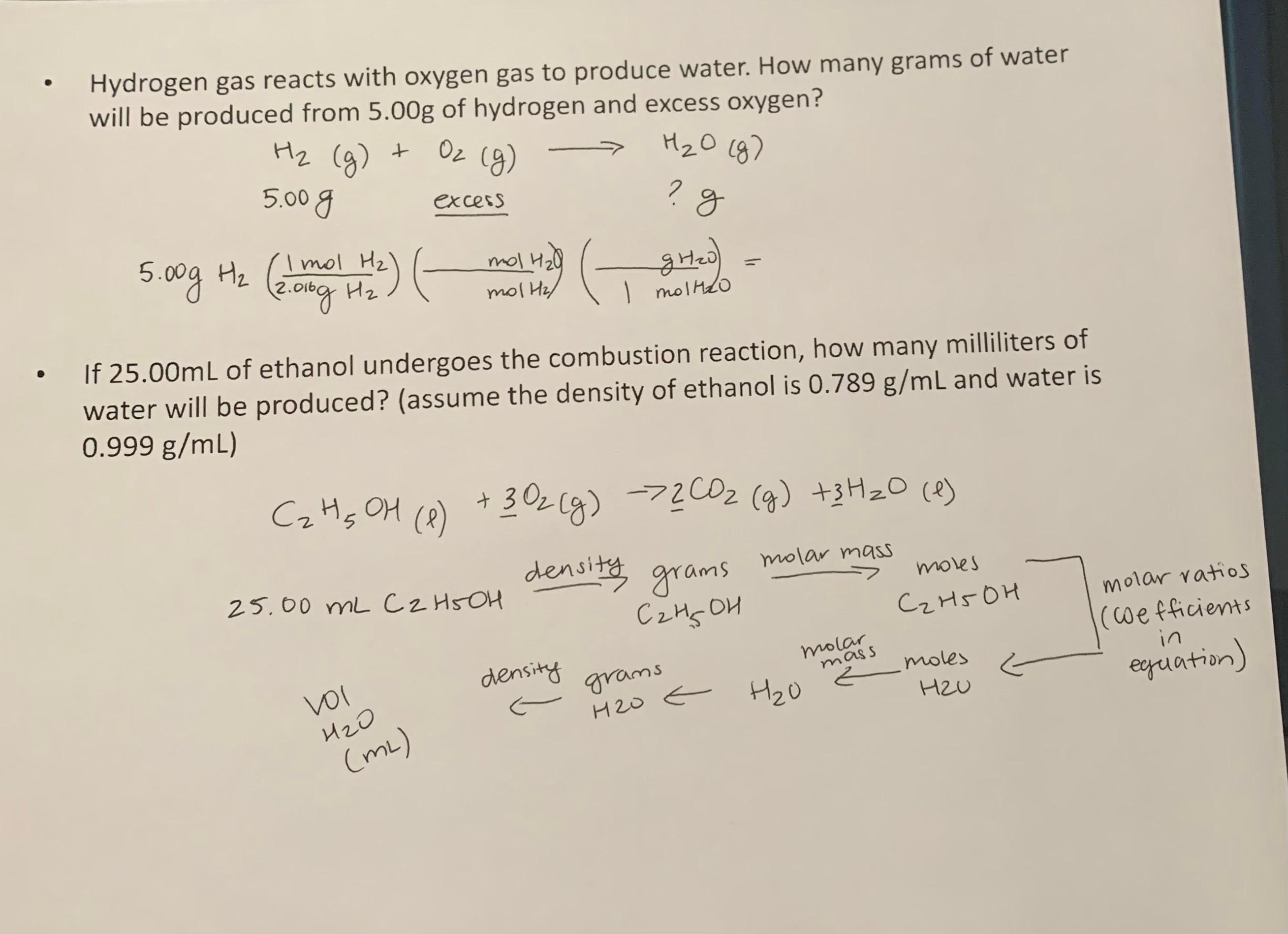If A Sample Of 4 50 Moles Of Hydrogen Gas
If A Sample Of 4 50 Moles Of Hydrogen Gas - Which is two hydrogen atoms' and one oxygen atom's molar masses combined: Enter number of moles and select a substance to search for. Web the result corresponds to the 3:2 ratio of hydrogen to ammonia from the balanced equation. Molar mass = mass / number of moles What is the total pressure for this sample of gases? Web a sample of hydrogen has an initial temperature of 50.° c. Write the balanced chemical equation. 1 mol h 2 has a volume of 24000 cm 3. If we know the values of three of these properties, we can use the ideal gas law to solve for the fourth. 4nh₃ (g) + 7o₂ (g) → 4no₂ (g) + 6h₂o (l) step 2.
Stoichiometry is the determination of proportions of elements or compounds in a chemical reaction. Volume and weight of the substance is calculated using its molecular weight, density and number of moles. Use the ideal gas law calculator to find the pressure, volume, and temperature of a gas. 1 mol h 2 has a volume of 24000 cm 3. \[ \begin{align*} v &= \dfrac{nrt}{pr} \\[4pt] &= \dfrac{(0.00150\;mol)\left( 0.08206\; Exercise \(\pageindex{3}\) given the following balanced chemical equation: Web you know the volume of the syringe you can fill with hydrogen (100 cm 3), and you can easily calculate the number of moles of hydrogen.
The result is the temperature (in kelvin ): 2) use pv = nrt: Web use the ideal gas law formula to find the number of moles of gas: Web you know the volume of the syringe you can fill with hydrogen (100 cm 3), and you can easily calculate the number of moles of hydrogen. Converting gas volume to moles.
\[\ce{c5h12 + 8o2 → 5co2 + 6h2o} \nonumber \], how many moles of \(\ce{h2o}\) can be formed if 0.0652 mol of \(\ce{c_{5}h_{12}}\) were to react? To find the volume of hydrogen gas in the sample, use the formula v=nrt. Exercise \(\pageindex{3}\) given the following balanced chemical equation: \[ \begin{align*} v &= \dfrac{nrt}{pr} \\[4pt] &= \dfrac{(0.00150\;mol)\left( 0.08206\; Determine the partial pressure for neon: If we know the values of three of these properties, we can use the ideal gas law to solve for the fourth.
A 4.00 l sample of gas contains 4.50 moles of helium, 2.68 moles of oxygen, and 3.33 moles of argon at 41.0â°c. Write the balanced chemical equation. \frac{l \cdot atm}{mol \cdot k} \right) ( 273.15\;k)}{1\;atm} \\[4pt] &= 0.0336\;l \; Web n 2 (g) + 3h 2 (g) ==> 2nh 3 (g) nitrogen gas + hydrogen gas ==> ammonia gas. Web the result corresponds to the 3:2 ratio of hydrogen to ammonia from the balanced equation.
Many metals react with acids to produce hydrogen gas. Number of moles = pv / rt. Web the ideal gas law allows us to calculate the value of the fourth quantity ( p, v, t, or n) needed to describe a gaseous sample when the others are known and also predict the value of these quantities following a change in conditions if the original conditions (values of p, v, t, and n) are known. Web molar volume at stp can be used to convert from moles to gas volume and from gas volume to moles.
26 People Are Viewing Now.
Web the ideal gas law allows us to calculate the value of the fourth quantity ( p, v, t, or n) needed to describe a gaseous sample when the others are known and also predict the value of these quantities following a change in conditions if the original conditions (values of p, v, t, and n) are known. Exercise \(\pageindex{3}\) given the following balanced chemical equation: 5.115 x (1.34/4.22) = 1.62 atm note: Many metals react with acids to produce hydrogen gas.
The Molar Mass Of A Gas Is Straightforward To Measure, As Equal Volumes Contain An Equal Number Of Moles.
To find the mass of hydrogen gas in the sample, use the molecular weight of hydrogen gas (2.48 g/mol). A 3.75 l vessel contains 2.50 g of nitrogen gas, 1.95 g of hydrogen gas, and 6.88 g of oxygen gas. Use the ideal gas law calculator to find the pressure, volume, and temperature of a gas. A 4.00 l sample of gas contains 4.50 moles of helium, 2.68 moles of oxygen, and 3.33 moles of argon at 41.0â°c.
Converting Gas Volume To Moles.
If you used pascals and cubic meters, the constant is r = 8.3145 j/mol·k. Web 1) determine total moles of gas: Divide the result of step 1 by the result of step 2: Volume and weight of the substance is calculated using its molecular weight, density and number of moles.
Web Ideal Gas Law Calculator.
\[\ce{c5h12 + 8o2 → 5co2 + 6h2o} \nonumber \], how many moles of \(\ce{h2o}\) can be formed if 0.0652 mol of \(\ce{c_{5}h_{12}}\) were to react? Web the result corresponds to the 3:2 ratio of hydrogen to ammonia from the balanced equation. Enter number of moles and select a substance to search for. To find the pressure of hydrogen gas in the sample, use the equation p=nrt.






